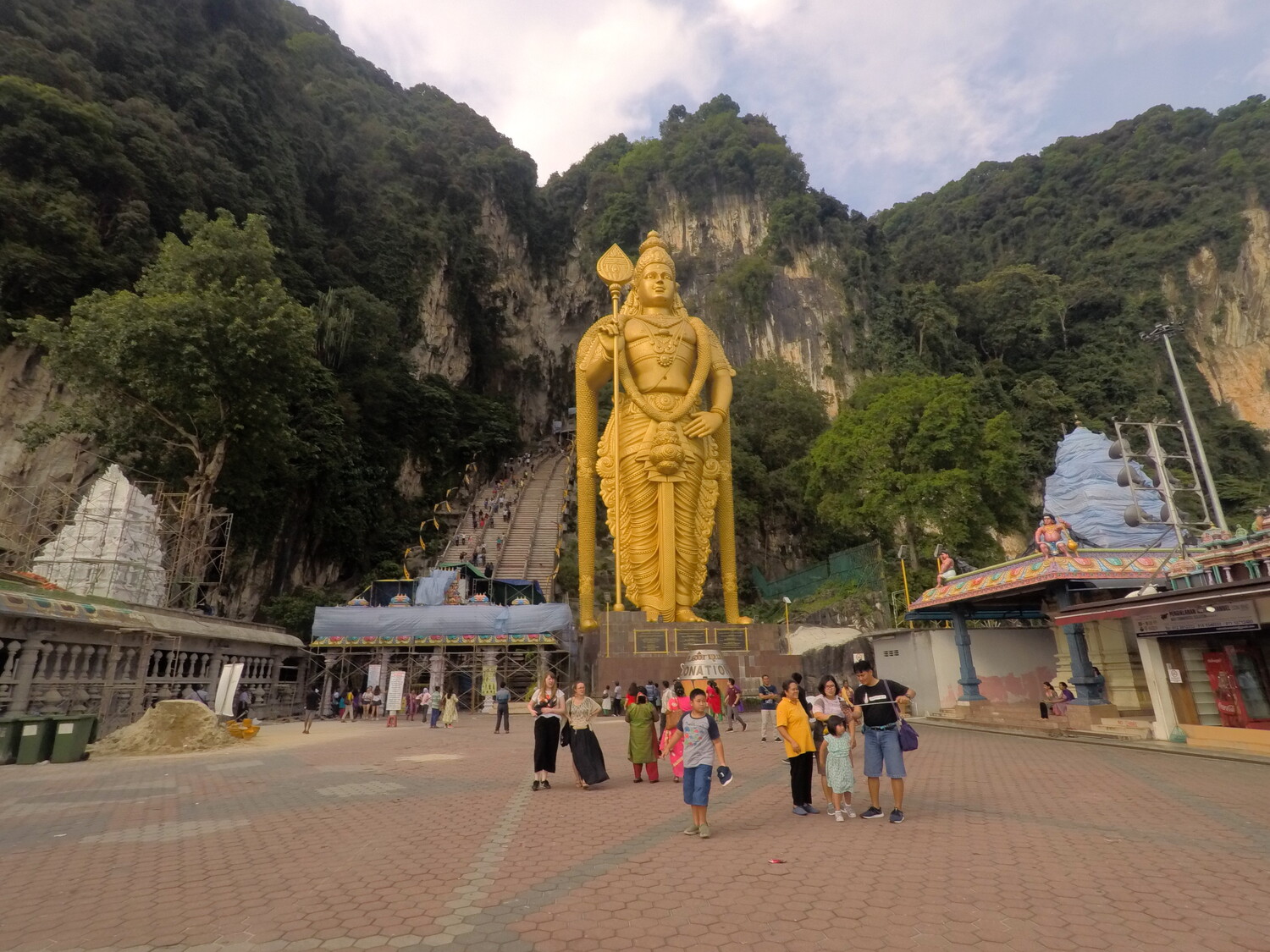Batu Caves: A Journey Through History, Culture, and Natural Beauty
If you’re traveling to Malaysia, Batu Caves is a must-visit destination that combines natural wonders, cultural richness, and religious significance. Located about 13 kilometers north of Kuala Lumpur, Batu Caves is one of the most famous Hindu temples outside India, attracting millions of visitors annually.
From the awe-inspiring limestone caves to the iconic golden statue of Lord Murugan, Batu Caves offers a perfect mix of spirituality, adventure, and architectural beauty. Let me guide you through everything you need to know about this remarkable place.

What Are Batu Caves?
Batu Caves is a complex of limestone caves and cave temples, nestled within a 400-million-year-old limestone hill. The caves take their name from the nearby Sungai Batu (Batu River) and have been a site of worship and attraction since the late 19th century. The main highlight of Batu Caves is the Temple Cave, which houses several Hindu shrines and statues. Alongside the spiritual significance, the caves are a geological wonder, with impressive stalactites and stalagmites formed over millennia.
The History Behind Batu Caves
The story of Batu Caves dates back to 1859 when Chinese settlers mined guano (bat droppings) in the caves to use as fertilizer. However, it wasn’t until 1878 that colonial naturalists discovered the caves’ unique formations. In 1891, the Tamil community in Malaysia began using the caves as a place of worship, dedicated to Lord Murugan, the Hindu god of war. The famous Thaipusam festival, which celebrates Lord Murugan’s triumph over evil, was first held here in 1892 and has become one of the largest Hindu festivals in the world.
The iconic Lord Murugan statue at the foot of the caves was added in 2006, standing at a towering height of 42.7 meters (140 feet). It is the tallest statue of Lord Murugan in the world and has become a symbol of the site.
Exploring Batu Caves
The Steps and the Entrance
To access the main Temple Cave, you’ll need to climb a flight of 272 colorful steps. While the climb might look intimidating, the vibrant surroundings and playful monkeys along the way make it an enjoyable experience. The stairs were repainted in 2018 with a rainbow of colors, adding a fresh vibrancy to the site.
At the base of the steps, you’ll encounter the awe-inspiring Lord Murugan statue, a brilliant golden figure that stands as a testament to devotion and craftsmanship. This spot is perfect for taking photos before beginning your ascent.
Temple Cave
The Temple Cave is the main attraction, situated at the top of the stairs. This enormous cavern features a high vaulted ceiling and houses several Hindu shrines dedicated to Lord Murugan and other deities.
As you walk inside, the natural beauty of the cave becomes apparent. The limestone formations create a mystical atmosphere, with sunlight streaming through holes in the ceiling. The cave’s walls are adorned with carvings and statues, telling stories from Hindu mythology.
During Thaipusam, the Temple Cave becomes a pilgrimage site, with thousands of devotees carrying kavadis (decorative frames) as an offering to Lord Murugan.
Dark Cave
Located halfway up the staircase, the Dark Cave is a natural wonder known for its biodiversity and geological formations. This section of the caves is not a temple but a protected area, offering guided tours that explore the unique ecosystem within.
Key highlights include:
- Rare species: The Dark Cave is home to the endangered trapdoor spider, found only in this cave.
- Stalactites and stalagmites: The formations in the Dark Cave are among the oldest in the world, offering a glimpse into Earth’s history.
- Educational tours: The guided tours provide insights into the cave’s ecosystem, geology, and history.
The Dark Cave is ideal for nature enthusiasts and those seeking an offbeat adventure.
Cave Villa
At the base of the hill, the Cave Villa is a series of smaller caves converted into an art gallery and museum. It features colorful paintings, Hindu statues, and exhibits that depict Hindu mythology and culture.
The Cave Villa is a more leisurely experience, offering a mix of art, culture, and history. There’s also a koi pond and landscaped gardens nearby, adding to the serene atmosphere.
Ramayana Cave
Located slightly away from the main staircase, the Ramayana Cave is another stunning attraction. This cave is dedicated to the epic Ramayana, with vibrant sculptures and murals narrating the story of Lord Rama.
The entrance is marked by a giant green statue of Hanuman, Lord Rama’s devoted companion. Inside, the colorful scenes bring the Ramayana to life, making it a must-visit for those interested in Hindu mythology.
How to Get to Batu Caves
Batu Caves is easily accessible from Kuala Lumpur, making it a popular day trip destination.
By Train – The KTM Komuter train runs directly from KL Sentral to Batu Caves Station. The journey takes about 30 minutes and costs only 2.60 MYR. The station is a short walk from the entrance to the caves.
By Taxi or Grab – Taxis and ride-hailing services like Grab offer a convenient way to reach Batu Caves. A one-way trip from central Kuala Lumpur costs approximately 20–25 MYR, depending on traffic.
By Bus – You can also take a bus from KL Sentral to Batu Caves, though this option is slower and less convenient.
Best Time to Visit
The best time to visit Batu Caves is early in the morning when the weather is cooler, and the site is less crowded. If you’re planning to attend the Thaipusam festival, be prepared for large crowds and an electrifying atmosphere.
Tips for Visiting Batu Caves
- Dress Modestly: As a religious site, visitors are expected to dress modestly. Avoid shorts and sleeveless tops; sarongs are available for rent if needed.
- Watch Out for Monkeys: The resident macaques are known for their cheeky behavior. Avoid carrying food openly, as they may try to snatch it.
- Respect the Culture: Remember that this is a place of worship. Behave respectfully, especially inside the Temple Cave.
Nearby Attractions
If you have more time, consider exploring these nearby spots:
- Kuala Selangor Nature Park: A great place to see fireflies and enjoy mangrove forests.
- Royal Selangor Visitor Centre: Learn about the art of pewter crafting.
- Genting Highlands: A hill resort featuring a theme park, casinos, and cool weather.
Batu Caves is a spiritual journey, a historical site, and a natural wonder all rolled into one. Whether you’re climbing the colorful steps, marveling at the limestone formations, or exploring the cultural richness of the temples, Batu Caves offers an unforgettable experience. Plan your visit, take your time to soak in the beauty, and let Batu Caves leave an indelible mark on your travel memories.









